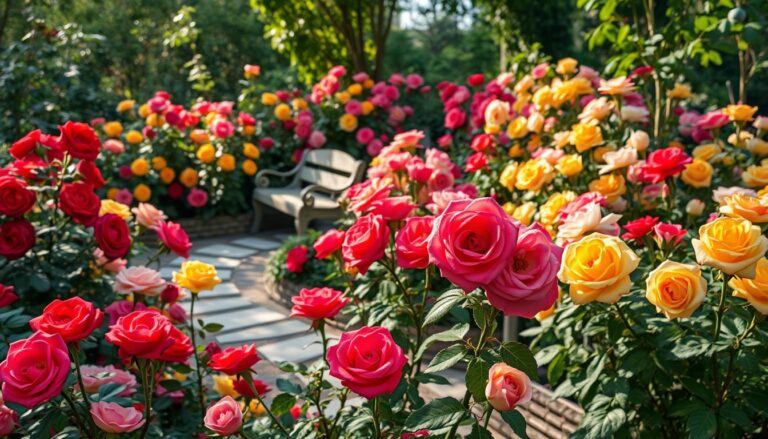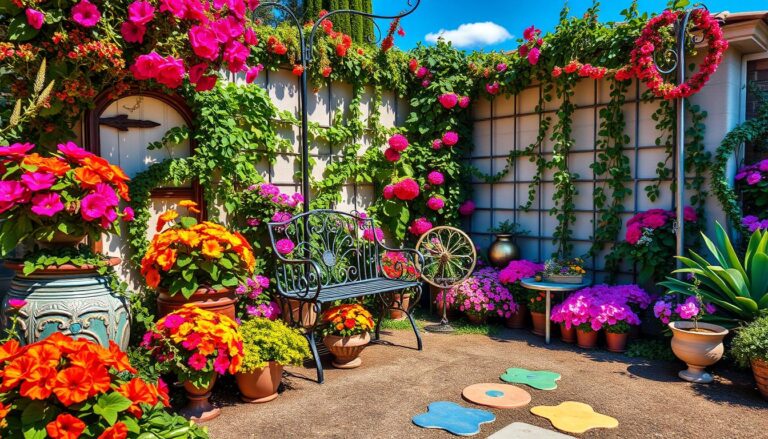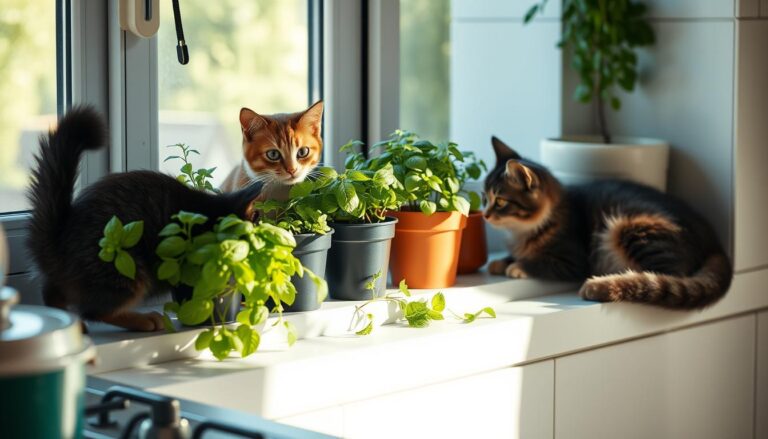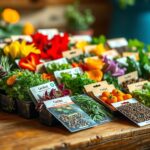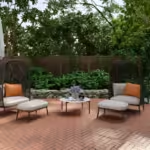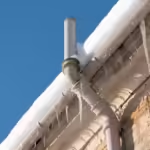In recent years, indoor gardening has blossomed from a niche hobby into a popular and practical way to grow fresh produce year-round. Whether you’re dealing with limited outdoor space, harsh climates, or simply want to extend your growing season, indoor gardening offers a solution. But with several methods available, how do you choose the right approach for your needs and space?
This comprehensive guide will explore three primary ways to indoor gardening: hydroponics, aquaponics, and soil-based growing. Each method has its unique advantages and challenges, catering to different preferences, skill levels, and goals. We’ll dive into the specifics of each approach, compare their pros and cons, and provide you with the knowledge you need to start your indoor garden journey.
Additionally, we’ll cover crucial factors that apply to all indoor gardening methods, such as lighting and pest management. Whether you’re a curious beginner or an experienced gardener looking to expand your horizons, this guide will help you navigate the exciting world of indoor gardening.
To help you easily navigate this comprehensive guide, here’s what we’ll be covering:
- Hydroponics: Gardening Without Soil
- How Hydroponics Works
- Advantages and Challenges
- Getting Started
- Aquaponics: The Symbiotic Approach
- How Aquaponics Works
- Advantages and Challenges
- Getting Started
- Soil-Based Indoor Gardening: The Traditional Approach
- How It Works
- Advantages and Challenges
- Getting Started
Let’s dive in and explore the various ways you can bring the joy of gardening indoors!
1. Hydroponics: Gardening Without Soil
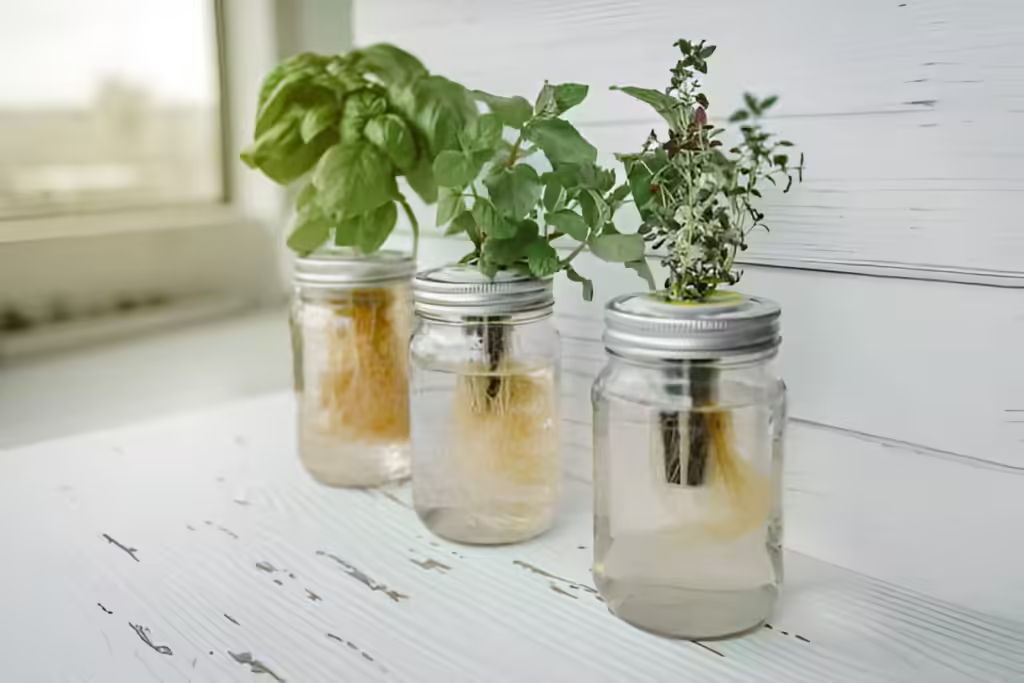
Hydroponics is a soil-free growing method that has gained significant traction in the world of indoor gardening. This technique involves growing plants in a water-based, nutrient-rich solution, allowing for efficient use of space and resources.
How Hydroponics Works
In a hydroponic system, plant roots are suspended directly in water or a soilless medium like rockwool or perlite. The water is enriched with carefully balanced nutrients that plants need for growth. This method allows for precise control over the plant’s growing environment, including pH levels, nutrient concentration, and even oxygen levels in the root zone.
Advantages of Hydroponics
- Water Efficiency: Hydroponic systems typically use up to 90% less water than traditional soil-based gardening.
- Faster Growth: With optimal nutrient delivery, plants often grow 30-50% faster than in soil.
- Higher Yields: Many hydroponic gardeners report significantly higher yields in smaller spaces.
- Year-Round Growing: Indoor hydroponic setups allow for cultivation regardless of outdoor conditions.
- Cleaner Growing Environment: The absence of soil reduces the risk of soil-borne diseases and pests.
Challenges of Hydroponics
- Initial Setup Costs: Quality hydroponic equipment can be expensive to purchase initially.
- Technical Knowledge: Successful hydroponic gardening requires understanding of nutrient balance and pH levels.
- Dependence on Equipment: Power outages or equipment failures can quickly impact plant health.
- Limited Crop Selection: While many plants thrive hydroponically, some crops are challenging to grow in this system.
Getting Started with Hydroponics
To begin your hydroponic journey, you’ll need:
- A hydroponic system (DIY or store-bought)
- Hydroponic nutrients
- Growing medium (if not using a pure water culture system)
- pH testing kit and adjusters
- Seeds or seedlings
- Grow lights (for indoor setups)
Start with easy-to-grow crops like lettuce, herbs, or tomatoes. As you gain experience, you can expand to more challenging plants and larger systems.
For a more in-depth look at hydroponic gardening, including detailed setup instructions and troubleshooting tips, be sure to check out our comprehensive Hydroponic Gardening Guide: Indoor Hydroponic Garden: How to Grow Your Own Oasis at Home.
2. Aquaponics: The Symbiotic Approach
Aquaponics takes hydroponics a step further by integrating fish cultivation into the system. This method creates a mini-ecosystem where fish waste provides nutrients for plants, and plants filter the water for the fish.
How Aquaponics Works
In an aquaponic system, fish are raised in tanks. Their waste, rich in nitrogen and other nutrients, is broken down by beneficial bacteria into a form that plants can absorb. The plants, in turn, filter and clean the water, which is then recirculated back to the fish tanks.
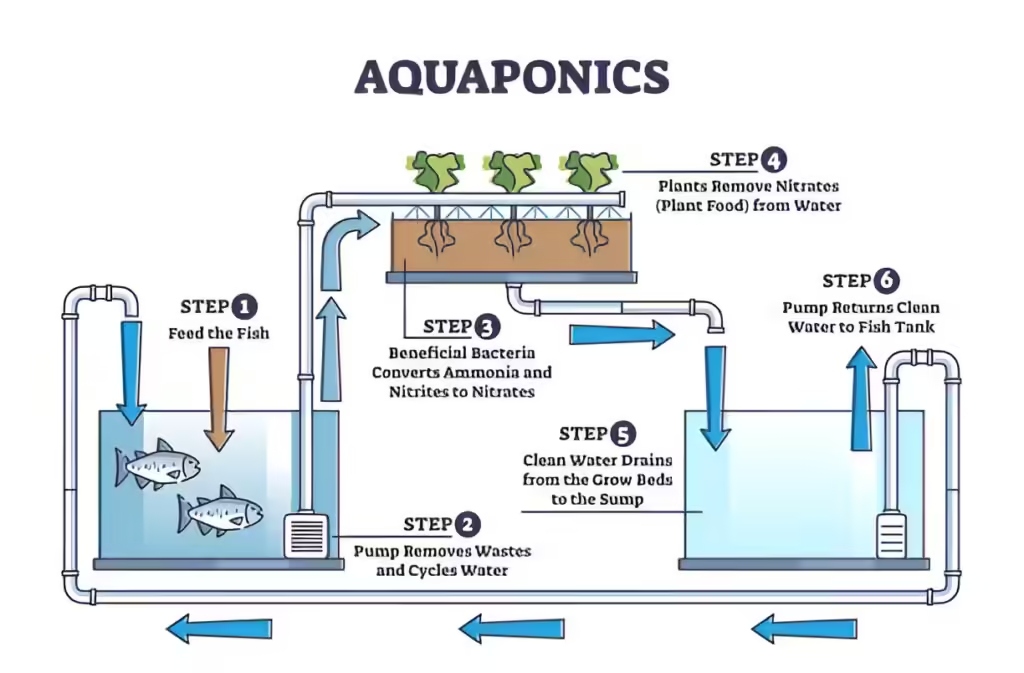
Advantages of Aquaponics
- Organic Produce: The system is entirely organic, using fish waste instead of synthetic fertilizers.
- Water Conservation: Aquaponics uses even less water than hydroponics, as the water is continuously recycled.
- Dual Harvests: You can harvest both plants and fish from the same system.
- Reduced Environmental Impact: The closed-loop system minimizes waste and resource use.
Challenges of Aquaponics
- Complex Setup: Aquaponic systems are more complicated to establish and maintain than hydroponics or soil gardening.
- Balancing Act: Maintaining the right balance between fish, plants, and bacteria requires careful monitoring and adjustment.
- Higher Initial Costs: Setting up an aquaponic system typically involves more equipment and higher startup costs.
- Limited Crop Variety: The high nitrogen levels from fish waste make aquaponics best suited for leafy greens and herbs.
Getting Started with Aquaponics
To set up an aquaponic system, you’ll need:
- Fish tank and filtration system
- Growing beds or towers for plants
- Fish (tilapia, goldfish, or koi are popular choices)
- Plants (start with leafy greens like lettuce or kale)
- Water testing kits (for pH, ammonia, nitrites, and nitrates)
- Beneficial bacteria to kickstart the nitrogen cycle
Begin with a small system to learn the ropes before scaling up. It’s crucial to establish the nitrogen cycle in your system before adding plants.
3. Soil-Based Indoor Gardening: The Traditional Approach
While hydroponics and aquaponics offer exciting possibilities, many gardeners prefer the familiarity and simplicity of soil-based growing. This method can be easily adapted for indoor use and offers its own set of advantages.
How Soil-Based Indoor Gardening Works
Soil-based indoor gardening involves growing plants in containers filled with a high-quality potting mix. This mix typically includes peat moss, vermiculite, and organic matter, providing a balanced medium for plant growth.
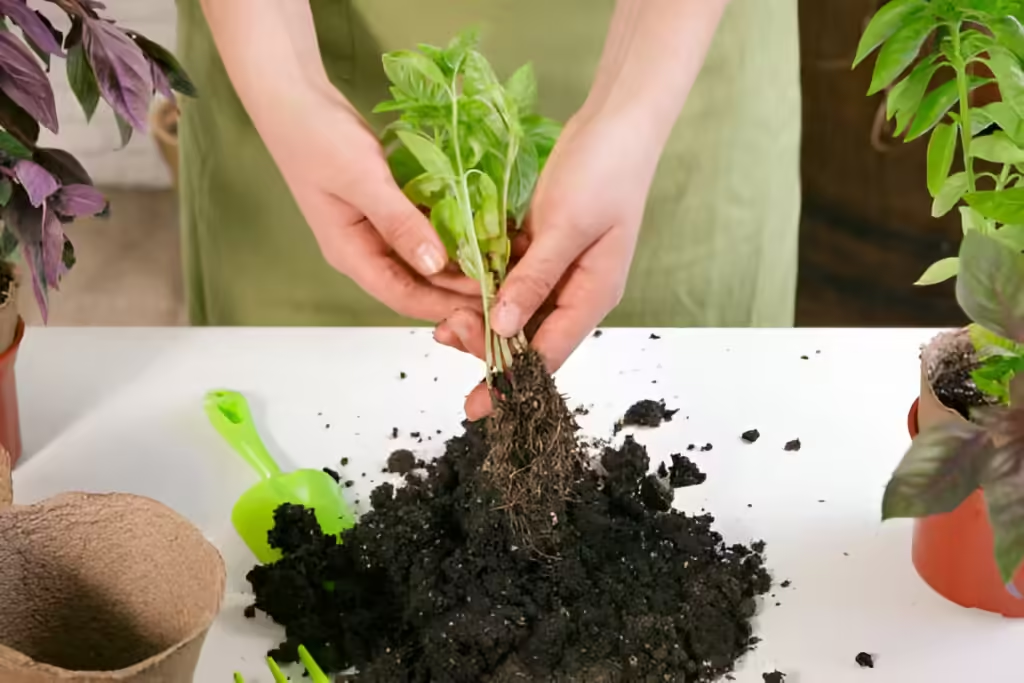
Advantages of Soil-Based Indoor Gardening
- Familiarity: Most people are already familiar with soil gardening, making it an easy transition to indoor growing.
- Versatility: A wide range of plants, including root vegetables, can be grown in soil.
- Lower Startup Costs: Basic supplies for soil gardening are generally less expensive than hydroponic or aquaponic setups.
- Forgiving Nature: Soil acts as a buffer, making it more forgiving of minor mistakes in watering or fertilizing.
Challenges of Soil-Based Indoor Gardening
- Space Requirements: Soil-based systems typically require more space than vertical hydroponic setups.
- Pest Management: Soil can harbor pests and diseases, requiring vigilant monitoring and management.
- Watering Balance: Achieving the right balance of moisture can be tricky, especially in indoor environments.
- Messiness: Soil can be messy when used indoors, requiring careful setup to prevent spills and damage.
Getting Started with Soil-Based Indoor Gardening
To begin soil-based indoor gardening, you’ll need:
- Containers with drainage holes
- High-quality potting mix
- Plants or seeds
- Grow lights (depending on your indoor light conditions)
- Watering can or self-watering system
- Organic fertilizers
Start with easy-to-grow plants like herbs, leafy greens, or small fruiting plants like cherry tomatoes or peppers.
4. Comparing the Three Methods
Each of these indoor gardening methods has its strengths and weaknesses:
- Hydroponics is excellent for those who want fast growth and high yields, and don’t mind a bit of technical complexity.
- Aquaponics is perfect for the eco-conscious gardener who wants to create a self-sustaining mini-ecosystem and doesn’t mind the learning curve.
- Soil-based gardening is ideal for beginners or those who prefer a more traditional approach and want to grow a wide variety of plants.
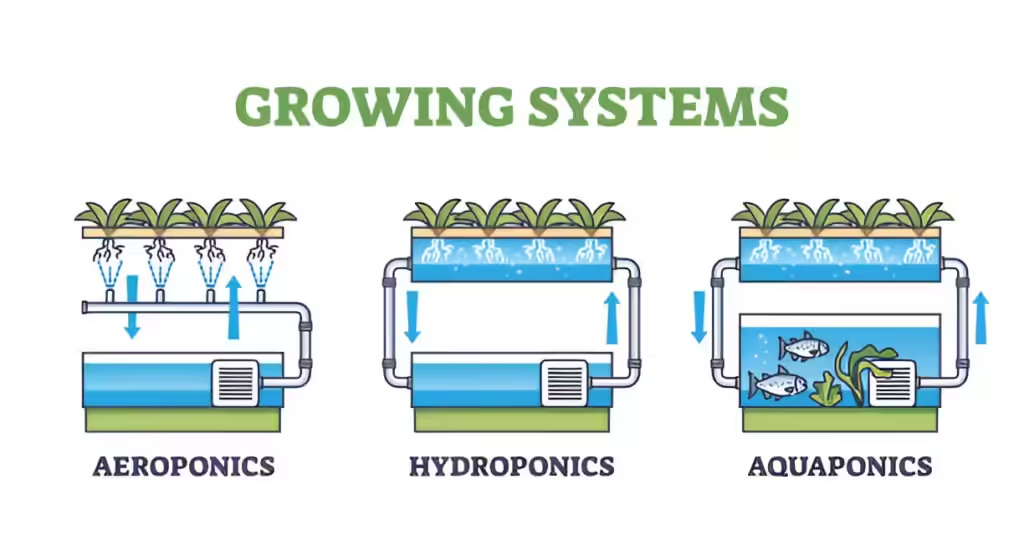
5. Lighting: A Crucial Factor in Indoor Gardening
Regardless of the method you choose, proper lighting is essential for successful indoor gardening. Natural sunlight is often insufficient, especially during winter months or in apartments with limited window space. Invest in quality grow lights to ensure your plants receive adequate light for photosynthesis.
LED grow lights have become increasingly popular due to their energy efficiency and low heat output. They can be customized to provide the specific light spectrum that your plants need at different growth stages.
6. Pest Management in Indoor Gardens
While indoor gardening can reduce pest problems, it doesn’t eliminate them entirely. Here are some tips for managing pests in your indoor garden:
- Inspection: Regularly inspect your plants for signs of pests or disease.
- Isolation: If you bring new plants indoors, quarantine them for a few weeks to prevent potential pest spread.
- Natural Predators: Introduce beneficial insects like ladybugs to control aphids and other pests.
- Organic Sprays: Use neem oil or insecticidal soaps as a first line of defense against pests.
- Prevention: Maintain good air circulation and avoid overwatering to prevent fungal issues.
7. Conclusion: Choose Your Path to Indoor Gardening Success
Indoor gardening offers a world of possibilities, allowing you to grow fresh, healthy produce year-round regardless of your living situation. Whether you choose the high-tech route of hydroponics, the eco-friendly approach of aquaponics, or the familiar comfort of soil-based growing, each method provides a unique and rewarding experience.
Remember, the best way to indoor gardening is the one that fits your lifestyle, space constraints, and gardening goals. Start small, learn from your experiences, and don’t be afraid to experiment. With patience and care, you’ll soon be enjoying the fruits (and vegetables) of your indoor gardening labor!
If you’re excited to dive deeper into the world of indoor gardening, we’ve got you covered. For a comprehensive resource that expands on everything we’ve discussed here and more, be sure to check out our [Ultimate Guide to Indoor Gardening]. This in-depth guide provides detailed instructions, expert tips, and advanced techniques to help you take your indoor garden to the next level, regardless of which method you choose.
Happy growing, and may your indoor garden thrive!


